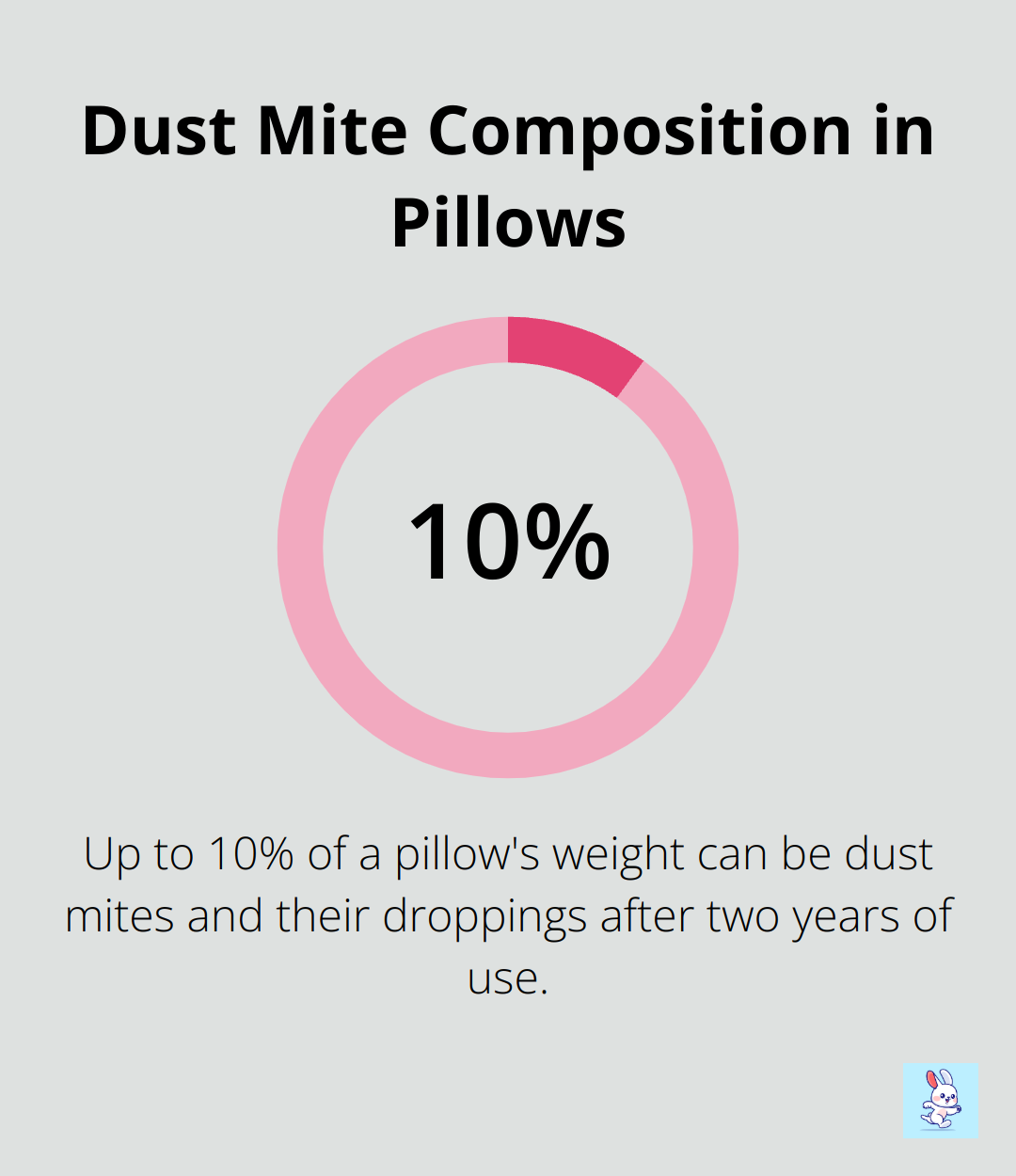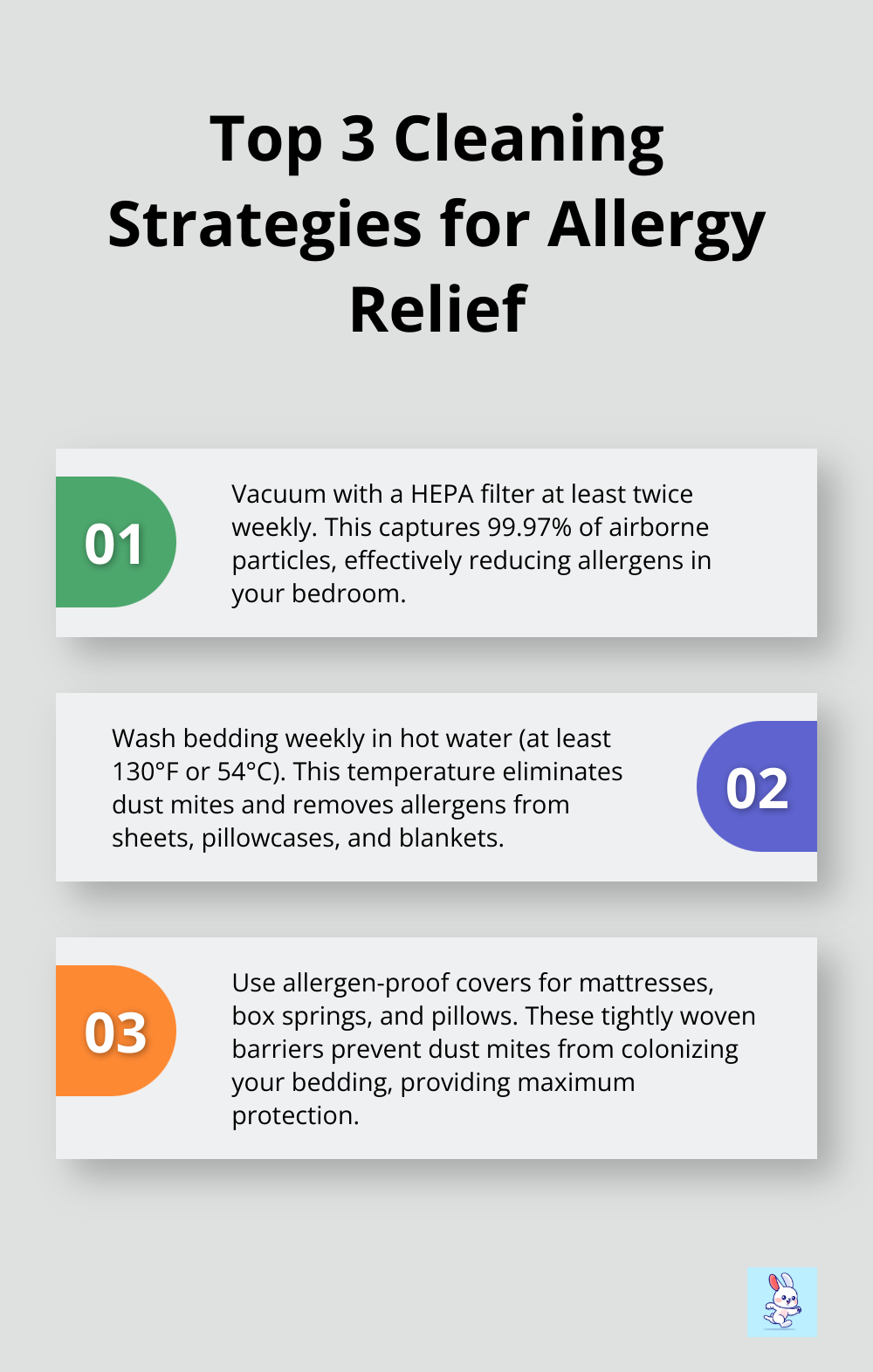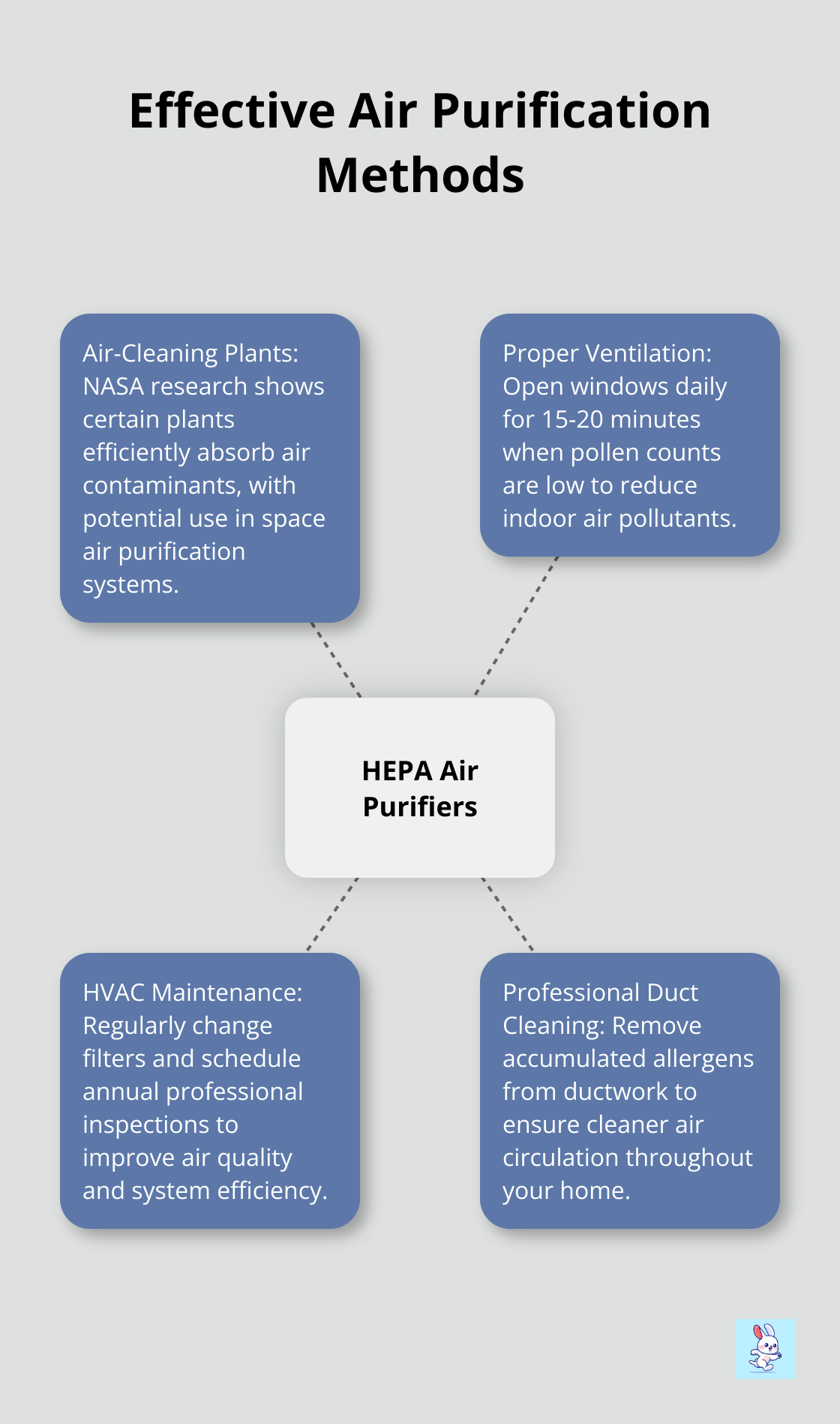At Cleaning Rabbit, we know that creating allergy-friendly bedrooms is essential for a good night’s sleep and overall health.
Bedrooms can be hotspots for allergens, affecting millions of people worldwide. In this post, we’ll explore practical strategies to transform your sleeping space into an allergy-free oasis.
From tackling common allergens to implementing effective cleaning methods, we’ve got you covered with actionable tips for better air quality and comfort.
What’s Lurking in Your Bedroom? Unveiling Hidden Allergens
The Invisible Army: Dust Mites
Bedrooms should be sanctuaries, but they often harbor hidden allergens that can disrupt sleep and trigger allergic reactions. Dust mites, microscopic creatures that thrive in warm, humid environments, are particularly fond of bedding, upholstered furniture, and carpets. Dust mites can trigger allergies and asthma attacks.
The American Lung Association reports that a typical used mattress may contain anywhere from 100,000 to 10 million dust mites inside. Pillows are also abundant with these creatures, with some experts estimating that up to 10% of a pillow’s weight could consist of dead dust mites and their droppings after two years of use.

Persistent Pet Dander
Pet owners face a constant battle with dander. These tiny flakes of skin shed by cats, dogs, and other furry friends can float in the air for hours and settle on surfaces throughout the bedroom. Pet dander is particularly sticky and can cling to walls, curtains, and even ceiling fans.
Pet allergens can increase the prevalence of asthma and asthma attacks among sensitized individuals. Even in homes without pets, dander can enter on clothing and shoes, making it a pervasive allergen.
Outdoor Invaders: Pollen
Pollen doesn’t respect boundaries. It sneaks into bedrooms through open windows, on clothing, and even on pets. During peak allergy seasons, pollen counts can soar, leading to increased symptoms for allergy sufferers.
The National Allergy Bureau has found that pollen counts peak between 5 a.m. and 10 a.m., which coincides with many people’s wake-up times. This timing can lead to increased exposure and symptoms right as you start your day.
The Silent Threat: Mold Spores
Mold thrives in damp, dark environments. In bedrooms, it often grows in areas with high humidity or water damage. Common sources include window sills, air conditioning units, and even potted plants.
The Environmental Protection Agency states that there are no federal limits for mold or mold spores in the air. However, the presence of visible mold or a moldy odor indicates a problem that needs addressing.
Understanding these common bedroom allergens is the first step in creating an allergy-free oasis. Now that we’ve identified the culprits, let’s explore effective cleaning strategies to combat these irritants and improve your bedroom’s air quality.
How to Clean Your Bedroom for Allergy Relief
Vacuum with Precision
Effective vacuuming forms the foundation of allergen control. Use a vacuum equipped with a HEPA filter to capture 99.97 percent of airborne particles. The Asthma and Allergy Foundation of America suggests vacuuming at least twice weekly, with extra attention to high-traffic areas and spaces beneath furniture.
For optimal results, move your vacuum slowly and systematically. Make several passes over each area, especially on carpeted surfaces. Don’t overlook upholstered furniture, curtains, and mattresses (which can harbor significant amounts of allergens).
Harness the Power of Hot Water
Regular washing of bedding in hot water plays a vital role in allergy management. The American Academy of Allergy, Asthma & Immunology recommends weekly washing of sheets, pillowcases, and blankets in water heated to at least 130°F (54°C). This temperature effectively eliminates dust mites and removes allergens.
Extend this practice to curtains, throw pillows, and stuffed animals. For items that don’t allow frequent washing, try placing them in the freezer for 24 hours to eradicate dust mites.
Create an Allergen Barrier
Invest in high-quality allergen-proof covers for your mattress, box spring, and pillows. These tightly woven barriers prevent dust mites from colonizing your bedding. Look for covers certified by reputable allergy organizations for maximum protection.
Clean these covers regularly as well. While they block allergens from penetrating your mattress and pillows, they can accumulate allergens on their surface over time.

Maintain Your HVAC System
Your heating and cooling system can become a significant source of allergens without proper maintenance. Replace or clean your HVAC filters every 1-3 months (depending on usage and filter type).
For a thorough cleanse, consider professional air duct cleaning. Companies like CleaningRabbit use HEPA-filtered equipment to remove accumulated dust, pollen, and other allergens from your ductwork, ensuring cleaner air circulation throughout your home.
The implementation of these strategies will significantly reduce allergens in your bedroom. While the initial effort might seem substantial, the rewards of improved sleep quality and reduced allergy symptoms prove invaluable. Now, let’s explore additional air purification methods to further enhance your bedroom’s air quality and create the ultimate allergy-free oasis.
How to Purify Your Bedroom Air
The Power of HEPA Air Purifiers
HEPA (High-Efficiency Particulate Air) purifiers transform bedroom air quality. These devices are effective in reducing the concentration of different sized particulate matter (PM) and ions. The Environmental Protection Agency recommends HEPA purifiers to improve indoor air quality, especially for allergy sufferers.
When you select a HEPA purifier for your bedroom, consider the room size and the device’s Clean Air Delivery Rate (CADR). A higher CADR indicates faster and more efficient air cleaning. Place the purifier near your bed for maximum benefit during sleep.
Nature’s Air Cleaners
Certain plants contribute to better air quality, although not as efficiently as HEPA purifiers. NASA’s Clean Air Study identified several plants that remove common indoor air pollutants. NASA research found that living plants are so efficient at absorbing contaminants in the air that some will be launched into space as part of their air purification systems.

Exercise caution with the number of plants you introduce. Too many can increase humidity, potentially encouraging mold growth. Try to keep one medium-sized plant per 100 square feet of space.
Proper Ventilation Matters
Good ventilation plays a key role in maintaining healthy bedroom air. The American Society of Heating, Refrigerating and Air-Conditioning Engineers (ASHRAE) recommends a minimum of 0.35 air changes per hour in residential spaces.
Open windows for 15-20 minutes daily, preferably when outdoor pollen counts are low. This simple act can significantly reduce indoor air pollutants. If outdoor air quality is poor, use trickle vents or a mechanical ventilation system.
For those with severe allergies, professional air quality assessments can identify potential ventilation issues and provide tailored solutions. Experts can help you create a ventilation strategy that balances fresh air intake with allergen control.
HVAC System Maintenance
Regular maintenance of your home’s HVAC system improves air quality. Change filters monthly and schedule professional inspections at least once a year. This not only enhances air quality but also improves the system’s efficiency (potentially reducing energy costs).
Professional Air Duct Cleaning
Consider professional air duct cleaning to remove accumulated dust, pollen, and other allergens from your ductwork. This ensures cleaner air circulation throughout your home. CleaningRabbit uses HEPA-filter vacuum equipment for thorough duct cleaning, making it a top choice for those seeking professional services.
Final Thoughts
Creating allergy-friendly bedrooms requires dedication and consistent effort. You can reduce allergens and improve sleep quality through regular vacuuming, hot water washing of bedding, and proper HVAC maintenance. Air purification methods such as HEPA air purifiers and proper ventilation further enhance bedroom air quality.
Professional assistance can provide optimal results for those seeking the ultimate allergy-free oasis. CleaningRabbit offers expert air duct cleaning services in Las Vegas and Henderson, using advanced HEPA-filtered equipment to remove allergens from home ductwork.
The combination of these strategies and professional help can transform your bedroom into a sanctuary of clean air and restful sleep. Your efforts in maintaining an allergy-friendly bedroom will improve your health, sleep quality, and overall well-being (benefits that far outweigh the initial investment of time and resources).

